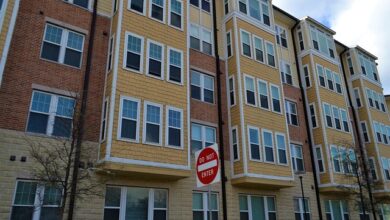How to Calculate the Right Amount of Homeowners Insurance Coverage

Homeowners insurance is a vital safeguard for protecting your most valuable asset—your home. However, determining the right amount of coverage can be tricky. Underinsuring your property could leave you financially vulnerable in the event of a claim, while overinsuring may result in unnecessary expenses. In this comprehensive guide, we’ll walk you through how to calculate the appropriate level of homeowners insurance coverage in the UK, ensuring you strike the perfect balance between protection and affordability.
Why Is Homeowners Insurance Important?
Before diving into calculations, let’s understand why homeowners insurance is essential:
- Protection Against Damage: It covers repairs or rebuilding costs due to events like fires, storms, floods, or vandalism.
- Liability Coverage: Protects you if someone is injured on your property or if you accidentally damage someone else’s property.
- Peace of Mind: Knowing you’re financially protected allows you to focus on enjoying your home without worrying about unexpected disasters.
In the UK, homeowners insurance typically falls into two categories:
- Buildings Insurance: Covers the structure of your home, including walls, roof, floors, and permanent fixtures.
- Contents Insurance: Protects your belongings, such as furniture, electronics, and personal items.
To determine the right amount of coverage, you need to assess both aspects separately.
Step 1: Assess Your Buildings Insurance Needs
What Does Buildings Insurance Cover?
Buildings insurance focuses on the physical structure of your home. This includes:
- The main building (walls, roof, floors)
- Permanent fixtures (kitchen units, bathroom suites, fitted wardrobes)
- Outbuildings (garages, sheds, greenhouses)
- Driveways, patios, and fences
How to Calculate Rebuilding Costs
The key to getting the right buildings insurance is accurately estimating the cost of rebuilding your home from scratch. Here’s how:
- Use the ABI Calculator: The Association of British Insurers (ABI) provides a free online calculator that estimates rebuilding costs based on your property type, size, and location. Visit their website and input your details for an accurate figure.
- Consult a Surveyor: For older or unique properties, consider hiring a professional surveyor. They can provide a detailed rebuild cost assessment, which may be necessary for listed buildings or homes with non-standard construction materials.
- Don’t Confuse Market Value with Rebuilding Costs: The market value of your home reflects its sale price, which includes factors like location and demand. Rebuilding costs are purely about construction expenses and are often lower than market value.
- Include Additional Structures: Don’t forget to factor in outbuildings, driveways, and other external features when calculating your total rebuilding cost.
Step 2: Evaluate Your Contents Insurance Requirements
What Does Contents Insurance Cover?
Contents insurance protects your personal belongings inside the home. This includes:
- Furniture (sofas, beds, tables)
- Electronics (TVs, laptops, gaming consoles)
- Clothing and jewelry
- Kitchen appliances and utensils
- Decorative items (curtains, rugs, paintings)
How to Calculate the Value of Your Contents
To ensure you’re adequately covered, follow these steps:
- Create an Inventory: Walk through each room of your home and make a list of all your possessions. Include approximate values for each item. Apps like Sortly or HomeZada can help you organize this information digitally.
- Estimate Replacement Costs: Focus on the cost of replacing items at today’s prices, not what you originally paid for them. Factor in inflation and potential increases in product costs.
- Consider High-Value Items: Valuable items like jewelry, art, or antiques may exceed standard coverage limits. You might need to add “specified items” coverage or purchase separate policies for these valuables.
- Add Up the Totals: Once you’ve inventoried everything, sum up the replacement costs to arrive at your total contents value.
Step 3: Review Optional Add-Ons
While buildings and contents insurance form the core of your policy, many insurers offer optional extras that enhance your coverage. Consider whether you need any of the following:
- Accidental Damage Cover: Protects against accidental breakage of items like windows, doors, or electronics.
- Flood Cover: Essential if you live in a flood-prone area.
- Home Emergency Cover: Provides assistance for emergencies like burst pipes, boiler breakdowns, or lockouts.
- Legal Expenses Cover: Helps with legal costs if disputes arise regarding your property.
Adding these options will increase your premium, so weigh their benefits against your specific needs.
Step 4: Account for Unique Factors
Every home is different, and certain factors can influence your coverage requirements:
- Property Type: Older homes, listed buildings, or those made from non-standard materials (e.g., thatched roofs) may require specialized policies.
- Location: Homes in high-risk areas for flooding, subsidence, or crime may need higher coverage levels.
- Security Features: Installing alarms, CCTV, or secure locks can reduce risk and potentially lower premiums.
- Lifestyle Changes: If you work from home, rent out part of your property, or store expensive equipment, adjust your coverage accordingly.
Step 5: Avoid Common Pitfalls
- Underinsurance: Failing to insure your home for its full rebuilding cost can leave you footing the bill for uncovered expenses after a claim.
- Overlooking Inflation: Building and replacement costs rise over time. Ensure your policy automatically adjusts for inflation or review it annually.
- Ignoring Policy Limits: Check the maximum payout limits for individual items and overall claims to ensure they align with your needs.
- Skipping Regular Reviews: Your insurance needs may change as you acquire new possessions or renovate your home. Review your policy regularly to keep it up-to-date.
Tips for Saving Money Without Sacrificing Coverage
- Combine Policies: Bundling buildings and contents insurance under one provider often results in discounts.
- Increase Your Excess: Opting for a higher voluntary excess can lower your premium, provided you can afford it in case of a claim.
- Shop Around: Use comparison websites like Compare the Market or MoneySuperMarket to find competitive quotes.
- Improve Security: Enhance your home’s security measures to qualify for reduced premiums.
- Pay Annually: Paying your premium upfront instead of monthly avoids interest charges.




